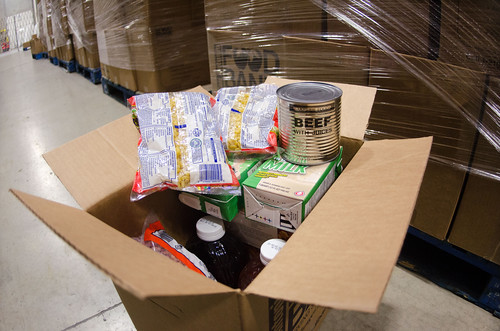
Logistics is not just a fancy buzz word; it is the oil that keeps the engine of an interconnected global market running smoothly. For U.S. food purchasing agencies, logistics means ordering, procuring, and delivering nearly 8.5 billion pounds of domestically-produced foods by successfully awarding nearly $3 billion in contracts during the last fiscal year. It means using the Web-Based Supply Chain Management System (WBSCM) – a tool developed by USDA that helped hundreds of companies deliver quality foods to recipients in the National School Lunch Program, other federal food assistance programs and even victims of disasters.
Before it could facilitate the ordering and delivery of all these foods, WBSCM had to integrate the business processes and needs of recipient agencies, external vendors/contractors and employees from five agencies with unique missions. The Agricultural Marketing Service (AMS), Food and Nutrition Service (FNS), Farm Service Agency (FSA) and Foreign Agricultural Service (FAS) are all USDA agencies, while the U.S. Agency for International Development (USAID) is an entirely different department. Creating a system that successfully tracks data covering the entire process – from gathering orders and soliciting bids to making sure that vendors are paid – was not an easy task. It requires a reliable, flexible system and an efficient staff to make it all come together.
Since it became fully-operational in 2011, WBSCM has proved to be that reliable system and the team used it to make some significant purchases. In 2012, when the country experienced one of the worst droughts in history, USDA used WBSCM to purchase $170 million worth of excess meat products that were depressing the market for American farmers. The entire process took only six weeks – record time for such a large government purchase. That allowed our nation’s farmers and ranchers to continue producing their quality items that feed families everywhere.
In similar fashion, USDA used WBSCM to procure rice for Filipino victims of the November 2013 Typhoon Haiyan, and a few months earlier to purchase wheat for humanitarian relief in Syria. WBSCM has been an important tool for international aid in times of crises and used to help U.S. victims such as those affected by Super Storm Sandy.
Enabling the consolidation of orders across all five agencies, WBSCM has yielded the government an 11% reduction in domestic transportation costs and a 10-15% reduction in ocean transportation costs. The streamlined process has also helped companies reduce their delivery times, resulting in a reduction in spoilage and shrinkage by 15-20%. It has even helped connect schools, food banks and other recipient agencies directly with the vendors who are supplying the food they serve.
There have been several other benefits resulting from WBSCM’s streamlined approach. Since its creation in 2007, the five agencies have seen a remarkable 245% return on their investment (ROI). Looking ahead to the future, the group hopes to update the system to help its vendors meet the ever-changing demands associated with a food distribution program.
USDA is excited to share WBSCM’s success with others as an example of innovation and efficiency fostered through government-industry partnerships in technology. We are honored to speak at an event for our military veterans where we will talk about WBSCM’s success and the key role veterans played in developing the system. USDA and its partner agency, USAID, are committed to being leaders when it comes to food distribution. We will continue to use WBSCM to help our nation’s farmers feed people all over the world.

